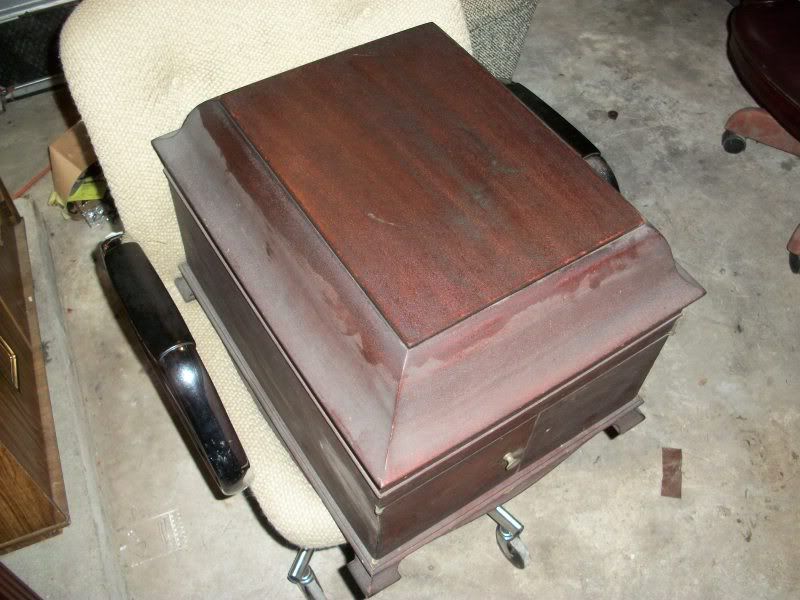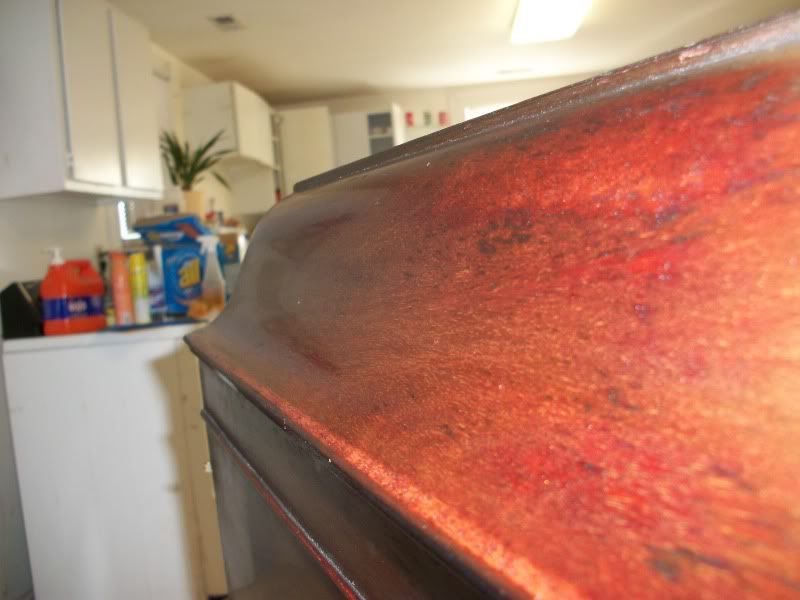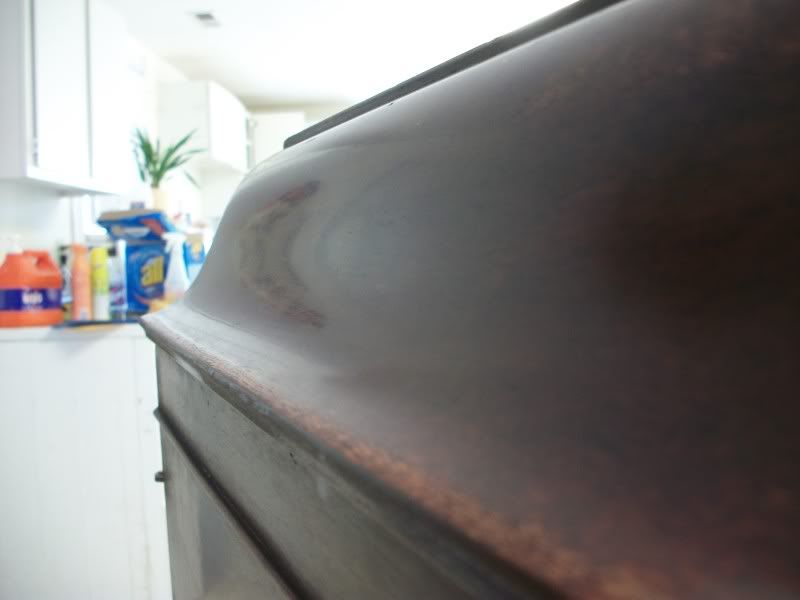Page 1 of 1
Am I doing it wrong, or...?
Posted: Thu Nov 03, 2011 12:55 pm
by SignatureSeriesOwner
A month or two back, I got a free VV-IX from someone that....had seen better days.

I soaked it in Lemon Oil for a day or two, reapplying every few hours, then began wetsanding (using Lemon Oil as the lubricant) with 400 grit, which knocked off a good portion of the alligatored shellac. Then, I went up to 600 grit, then 800, and now 1000, 1500, 2000, and 2500. Problem is, while the one panel I have worked on has a mirror finish when viewed at an angle, it's "hazy" and greyish, so the wood doesn't "pop" like I think it should. I had to go down to the last 1-2 coats of shellac to get 95+% of the alligatoring off, so resanding from 400 grit back up isn't really an option. Here is how it looks now:



When you hit it with light, it looks stunning, but just sitting there without light directly on it, it's "hazy". Is there anything I can do to fix it? Or is that just the nature of the beast?

Re: Am I doing it wrong, or...?
Posted: Thu Nov 03, 2011 1:53 pm
by Victrolaman
Here is my 3 cents..
I would have never sanded it at all, you have to be very carefull as the veneer is very thin, it didnt look to bad before you did this. I see you have a thing of GOJO hand cleaner in the picture there, what i would have done is got some non pumice gojo, put it on the wood and let it set, alot of the time what your seeing isnt the finish but 100 years of old oily fingers, cigar and cig smoke. You watch the original finish come to light, you will see the wood grain in the veneer, Gojo is a safe way to clean these. At this point you have already ruined the finsh i would just take and now strip it and refinish it, but sanding to me is like lace on a bowling ball, you just dont do it

After you refinish it with the stain, get a few cans of clear laqure and spray it with that to seal it. But dont use anymore sanding.
Again just my opinion and 3 cents worth

Re: Am I doing it wrong, or...?
Posted: Thu Nov 03, 2011 2:15 pm
by SignatureSeriesOwner
That's generally the route I would go too, and I did indeed try the GoJo and steel wool trick, and while it looked better, it was still so alligatored that you could barely see any grain at all through all the.....haze, I guess.
After sandign with 400, it looked like this:

That was quite acceptable, except there was no "clarity" to it. It was a hazy/clear, but rough finish. Now it's a smooth one, but still hazy.
Re: Am I doing it wrong, or...?
Posted: Thu Nov 03, 2011 5:37 pm
by martinola
Hi SSO.
Sorry to hear the finish is giving you problems. Before you reach for that can of stripper, you may want to try something else that might possibly work: Re-amalgamation & overcoating in clear shellac. While the top coats were originally varnish, the under coats were almost certainly shellac.
Please excuse me if I cover any pathetically obvious stuff, but here's what I'd do:
Use 0000 steel wool to introduce the barest amount of abrasion to the surface. (very, very light pressure -just enough to put some "tooth" in the very shiny spots) Then use paper towels and mineral spirits (paint thinner) to get off any residual oils.
After that dries, paint surface with denatured alcohol. (Not too much alcohol.) Work your brush slightly starting to move the original finish. It will probably start to "blush-up" stain and particles of filler. It will look pretty nasty. (This is where prayer and some more shellac comes in.) After this application dries (about an hour or so in a heated environment or longer in the cold garage), over-coat in clear shellac. Use the Zinsser in the yellow can (not spray). You'll want to use it slightly thinned with denatured alcohol.
Work in thin coats and let dry before next application. If you're lucky, it will start looking better with each application. You can retouch thin spots between coats with stain or even marking pens.
I had an Edison Standard model D that I recently rescued this way. After the first alcohol treatment it looked so bad that I really gave up hope that it would work. I kept at it with the subsequent coats and it began to look better and better. It ended up taking about 20 thin coats (sanding with 320 between every 4th coat), but it looks great. It also has the added benefit of the original color. So, in your case, if worst comes to worst, it can still be stripped and refinished.
I know this is not what you set out to do, and I wouldn't blame you if you decided to do something else. However, you are now at a good place for experimenting since you have little to lose and much to gain. Whatever you end up doing; good luck and keep us posted. (This way; if you learn something - we all learn something.)

Best Regards,
Martin
Re: Am I doing it wrong, or...?
Posted: Fri Nov 04, 2011 8:20 am
by FloridaClay
Realizing of course that it is a matter of taste and personal preference, but were it me I would just stop now. You have a very handsome result and I think it is safe to say that most collectors do not want super shiny just-out-of-the-factory perfect. Leaving just a bit of a patina preserves its character.
Clay
Re: Am I doing it wrong, or...?
Posted: Fri Nov 04, 2011 9:17 am
by SignatureSeriesOwner
I'm thinking along those lines as well.
Martinola, I appreciate you taking the type to write up your approach, but I think I'll wait to try it on another machine some day. Granted, if you had posted that when I first got the machine, that's likely the way I would have gone.
Out of curiosity, there are a few spots where the sandpaper went down to the wood, removing some of the original stain, what would be the best way to touch up those areas? Since this wasn't a very expensive model, did they use simply red mahogany wood stain, or was it much more complex than that?









